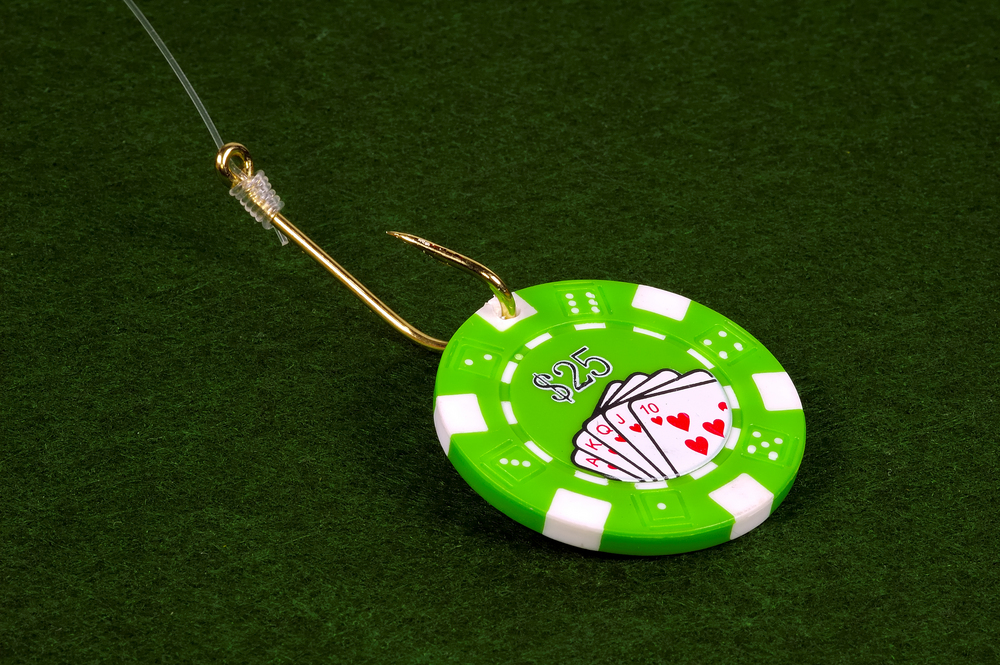Generally in a game of poker, there’s invariably a fish at the table. However, there are instances where there can be more than one fish at any given time. Identifying such players is equally as important as your game strategy when playing at any table. Weeding out the fishes at your table can drastically improve your game. As far as playing poker online in India is concerned, the bad plays by these fishes is where most of your profits come from; it is crucial that you figure out how to beat them. Knowing how they might behave in certain situations and tailoring your play against them, will help you own them in the long run.
Below are some of the specific identifiable traits that are typical of a fish at any poker table (whether online or live):
1. Playing Way Too Many Hands
Playing way too many hands is one of the first signs of a fish at the table. Regardless of their hands, a fish usually tends to play all hands. One trait that is the perfect example of a fish – a person who seems to be calling end number of pre-flop hands.
2. Calling All the Way
Players who follow this pattern are often labelled as “calling stations”. Such players often exhibit a loose-passive style of play. They tend to play way more hands than he/she should and rarely opens or raises the bets of others, instead continue to call the bets (remaining in the hand all the way to the showdown). One trait that all calling stations have in common is that though they often call all hands, they rarely ever raise.
To deal with these calling stations, bet large on the flop and continuation bet if they call. It is almost guaranteed that if they call you down to the river – they are chasing a hand (whether a run and flush). In such a scenario – if they respond to your bet on the river with a re-raise, it is taken that they have hit their hand – its best if you move out from such bets at the river. Value betting medium to strong hands is a sure shot way to exploit such players.
3. Under betting and Over betting
You can easily spot the fish at a table by their betting pattern. The main drawback with Over betting is that you are at risk of losing a lot of chips in your effort to win just a few. And a fish does just that. When playing up against such players, it’s best to simply wait for a big hand. By doing so, you could get paid off well when you do have the best cards. It doesn’t hurt to let the over betters take the blinds – you can win many times over when they over bet with a top pair, and you’ve hit the nuts on the flop (e.g., holding an AK with AAK on the flop).
Under betting is a mistake that most fishes make in their effort to collecting a big pot. However, what this does is allow people with poor cards to make hands that will beat you. By consistently Under betting, a fish will find draws that will eventually be up against you. Players often turn a good hand into a weak one by Under betting. For example, limping in with a JJ or a QQ is one of most the worst mistake amateurs make – there is a high probability that overcards might show up on the flop. When playing against players who frequently under bet, you should ensure that you are rightly chasing your draws.
4. Showing Losing Hands
Poker is a game that is largely determined by information. Fishes often make the mistake of giving way too much information by showing off their losing hands in the effort to validate their gameplay. This tactic only harms their game further by giving the opponents a heads up on the poor, amateur strategy adopted.
5. The Mouth
This term is often associated with Mike Matusow, for his trash talks at the poker table. There are players who talk non-stop to rattle opponents at a table – a tactic used even by professionals to put a competitor on tilt. However, this move is often adopted by fishes to create a false impression and can be easily spotted out (e.g., no matter how nice the sentiment, a player shouting out a “nice hand” or “well played” when someone shows pocket aces is a sure sign of a fish).
6. The Critic
In the effort to make themselves look good, fishes end up critiquing everyone else’ game of play. The best way to deal with such players is to listen to their rants – over time, they will eventually reveal their entire game plan.
7. Over-protecting the Blinds
Blinds and antes are simply a sunk cost at a poker table. Refusing to fold when they are in the blinds even with the worst of cards, is the trademark of a fish.
8. Cold Calling Preflop
Cold calling and over limping pre-flop is also a sure sign of a fish. While this tactic may be wise in big stack tables, the move is detested by most experienced players. To deal with cold callers, you could either stick to the pre-flop principle of fold or raise; folding or 3-betting against a pre-flop raise is also advisable.
9. The “All-In” Fail
All-in moves, when used wisely, can be a powerful weapon; however, too much of these calls can be a poker suicide. All-in calls are usually synonymous with aggressive fishes. Such players do not like playing after the flops are out. A player always pushing for an all-in every other hand (pre or post flops) while the blinds are relatively low, is typical of an aggressive fish.

